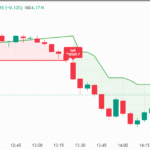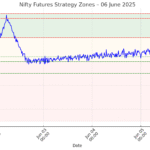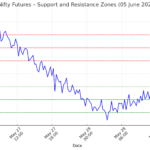Intraday trading offers the potential for quick profits, but it also comes with significant risks. Without a solid risk management plan, traders can quickly find themselves on the losing side of the market. Effective risk management is crucial for minimizing losses and ensuring long-term success. Here are some key risk management strategies that every intraday trader should consider:
**1. Determine Your Risk Tolerance
Before you start trading, it’s essential to understand your risk tolerance—the amount of risk you’re willing to take on each trade and overall. This depends on factors like your financial situation, trading experience, and emotional resilience.
- Rule of Thumb: Never risk more than 1-2% of your total trading capital on a single trade. This helps protect your account from significant losses.
**2. Set a Stop-Loss for Every Trade
A stop-loss order is an automatic order to sell a security when it reaches a certain price, limiting your losses. Setting a stop-loss is one of the most important risk management tools in intraday trading.
- Fixed Stop-Loss: Place a stop-loss order at a fixed percentage or price level below your entry price.
- Trailing Stop-Loss: A trailing stop-loss adjusts as the price moves in your favor, allowing you to lock in profits while still limiting potential losses.
**3. Use Proper Position Sizing
Position sizing refers to the number of shares or contracts you buy or sell in a trade. It’s crucial to ensure that your position size aligns with your risk tolerance and the potential loss you’re willing to take.
- Formula: Position Size = (Account Risk / Trade Risk). For example, if you’re risking $100 on a trade and your stop-loss is $1 away from your entry price, your position size should be 100 shares ($100 / $1).
**4. Diversify Your Trades
Avoid putting all your money into a single trade or asset class. Diversifying your trades across different stocks, sectors, or asset types can reduce your overall risk.
- Example: Instead of investing all your capital in tech stocks, consider spreading your investments across different sectors like healthcare, energy, and consumer goods.
**5. Limit the Number of Trades Per Day
Overtrading can lead to increased risk and lower profitability. It’s essential to set a limit on the number of trades you make each day to avoid emotional decision-making and fatigue.
- Tip: Focus on quality trades rather than quantity. Ensure each trade meets your criteria before entering the market.
**6. Avoid High-Risk Stocks and Assets
Some stocks and assets are more volatile than others, and while they may offer higher potential rewards, they also come with increased risk. It’s often better to trade more stable, liquid assets with a predictable pattern.
- Tip: Use volatility indicators like the Average True Range (ATR) to assess the risk level of a stock or asset before trading.
**7. Practice Proper Risk-Reward Ratios
The risk-reward ratio measures the potential reward for every dollar you risk. A good risk-reward ratio ensures that your potential profits outweigh your potential losses.
- Standard Ratio: Aim for a risk-reward ratio of at least 1:2, meaning you’re risking $1 for the chance to make $2.
**8. Use Leverage Cautiously
Leverage allows you to control a large position with a small amount of capital, but it also amplifies your losses. Use leverage cautiously and be aware of the risks involved.
- Tip: Stick to low leverage levels until you’re more experienced, and always have a clear exit strategy when using leverage.
**9. Keep Emotions in Check
Emotional trading is one of the biggest risks in intraday trading. Fear, greed, and hope can lead to poor decision-making and increased risk. It’s essential to stay disciplined and stick to your trading plan.
- Tip: Take breaks when you’re feeling stressed or overwhelmed, and avoid making impulsive trades.
**10. Maintain a Trading Journal
Keeping a trading journal helps you track your trades, analyze your performance, and identify areas for improvement. It’s an essential tool for managing risk and enhancing your trading strategy over time.
- What to Record: Note the details of each trade, including entry and exit points, stop-loss levels, reasons for the trade, and the outcome.
**11. Review and Adjust Your Strategy Regularly
The market is constantly changing, and what works today might not work tomorrow. Regularly review and adjust your trading strategy to ensure it aligns with current market conditions and your risk management goals.
- Tip: Conduct periodic performance reviews and backtest your strategies to assess their effectiveness.
**12. Utilize Risk Management Tools
Many trading platforms offer built-in risk management tools that can help automate your risk management process. These tools can include automated stop-loss orders, alerts, and risk calculators.
- Example: Use position sizing calculators to determine the optimal number of shares or contracts to trade based on your risk tolerance.
Conclusion
Intraday trading offers exciting opportunities for profit, but it also comes with significant risks. By implementing these risk management strategies, you can protect your capital, reduce losses, and increase your chances of long-term success. Remember, successful trading is not just about making money; it’s about preserving it. Stay disciplined, manage your risks effectively, and continuously learn and adapt to the ever-changing market environment.
















